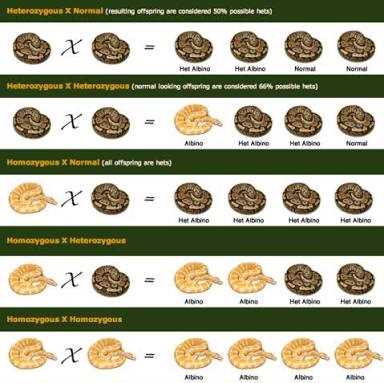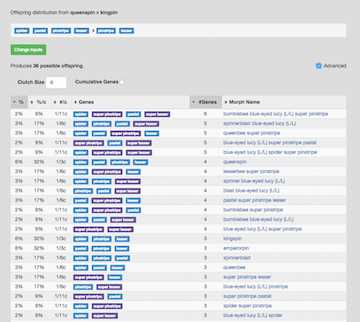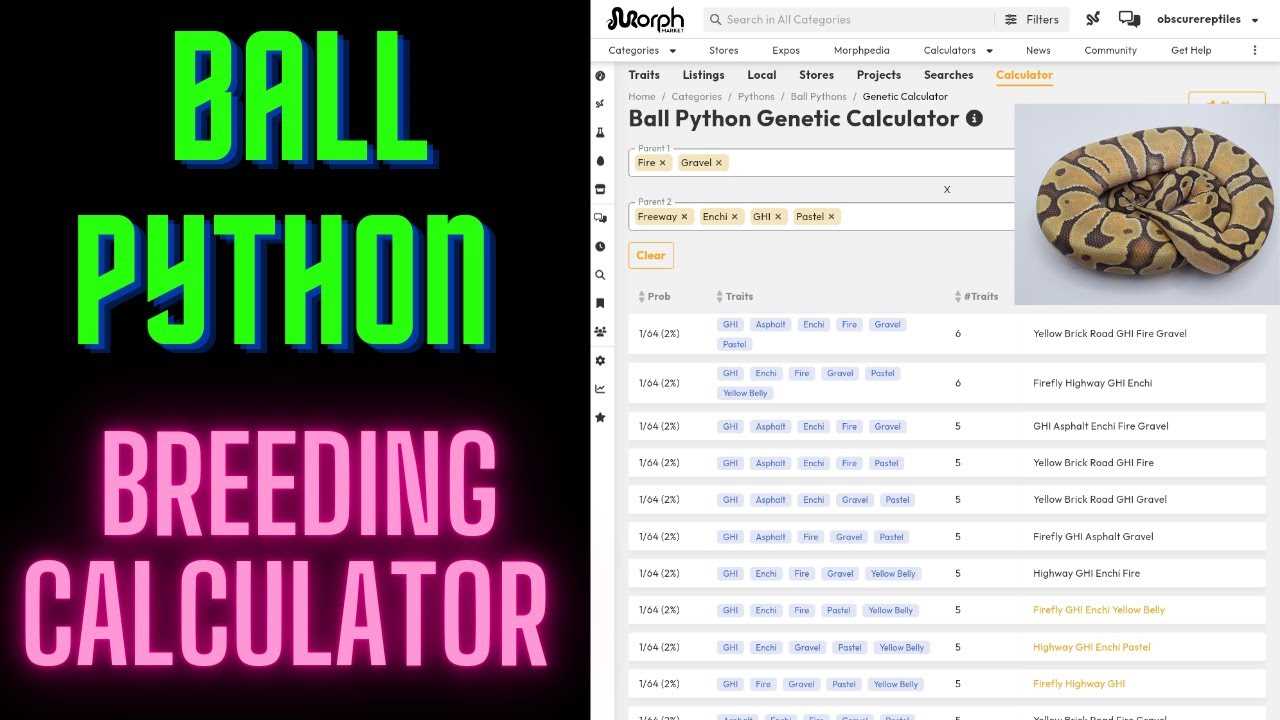A breeding calculator is a powerful resource that helps breeders predict the outcomes of their ball python clutches based on the genetics of the parent snakes. By inputting the genetic information of the male and female snakes, including their morphs and het genes, the calculator generates a list of possible outcomes for the clutch.
The results provided by the breeding calculator can help breeders anticipate the appearance of certain traits or morphs in the offspring. This allows them to plan their breeding projects with precision, taking into account market demand and personal preferences. Whether the goal is to produce visually stunning morphs or to test for hidden recessive genes, the breeding calculator can be an indispensable tool in the hands of a ball python breeder.
Mating usually takes place during the cooler months, as ball pythons require a drop in temperature to stimulate breeding behavior. The male will engage in courtship rituals, such as vibrating his tail and rubbing against the female’s body, to indicate his interest. Once the female is receptive, mating will occur, often lasting several hours.
Diet and reproduction are closely linked in ball pythons. Proper nutrition is crucial for the health and reproductive success of the snakes. Female ball pythons require a balanced diet to develop healthy eggs, while males need proper nutrition to produce viable sperm. Breeders must ensure that their snakes receive appropriate diets and supplementation to optimize breeding success.
Using a Breeding Calculator to Predict Genetic Outcomes

The breeding calculator is a tool that takes into account the genetic information of the parent snakes and provides a prediction of the potential genetic outcomes of their offspring. This tool is particularly useful when breeders are working towards specific traits or color morphs.
When using the breeding calculator, breeders input the genetic information of both the male and female snakes. This includes any known genetic characteristics, such as color morphs or specific traits. The calculator then uses this information to generate a prediction of the potential genetic outcomes of their mating.
Another factor to consider when using the breeding calculator is the potential variability in the genetic expression. Even if the calculator predicts a certain outcome, there may be variations in the actual appearance of the offspring. This is due to the complex nature of genetics and the possibility of genetic interactions that are not fully understood.
In addition to using the breeding calculator, breeders should also consider other factors when planning their breeding projects. These factors include the health and condition of the snakes, their diet and nutrition, and proper reproductive care. Providing a suitable environment and monitoring the mating and incubation process can greatly increase the chances of successful breeding.
Factors to Consider when Breeding Ball Pythons
1. Genetics
2. Breeding Calculator
A breeding calculator is a useful tool for ball python breeders. It allows breeders to input the genetic information of the parent snakes and predicts the potential genetic outcomes of their offspring. This tool can help breeders plan their breeding projects and make informed decisions about which snakes to pair together to achieve desired traits.
3. Reproduction and Mating

4. Environmental Factors
The environment in which the ball pythons are housed can also impact breeding success. Ensuring that the snakes have a comfortable and stress-free environment can improve breeding outcomes. This includes providing appropriate hiding spots, maintaining proper temperatures, and minimizing disturbances in the breeding area. Additionally, some breeders employ techniques such as “brumation,” where the snakes are subjected to a period of cooler temperatures to mimic their natural hibernation cycle, which can stimulate breeding behavior.
Implementing Breeding Strategies to Achieve Desired Traits

When using a breeding calculator, breeders should input the genetic information of the parent snakes, including the alleles they carry for specific traits. The breeding calculator then generates the possible genetic outcomes for the clutch, allowing breeders to determine the likelihood of producing offspring with desired traits.
Breeders should also pay attention to the diet of the parent snakes leading up to breeding. A well-balanced and nutritious diet is essential for the overall health and reproductive capabilities of the snakes.
Common Challenges in Ball Python Breeding
Diet and Reproduction
Genetics and Breeding
Mating Behavior
Maximizing Success in Ball Python Breeding
Utilizing the Ball Python Breeding Calculator for Future Breeding Projects
The first step in utilizing a breeding calculator is to input the genetic information of the parent snakes. This includes their morphs, genetic codes, and any known genetic traits they may carry. The more accurate and detailed the information provided, the more accurate the predictions generated by the breeding calculator will be.
Once the genetic information is entered, the breeding calculator will analyze the potential combinations of genes and provide a prediction of the possible offspring’s genetic outcomes. This can be extremely helpful in deciding which snakes to mate together to achieve desired traits and morphs in the offspring.
In addition to utilizing a breeding calculator, there are other factors to consider when breeding ball pythons. These include providing proper nutrition and care for the snakes, ensuring they are of reproductive age and health, and creating the right environmental conditions for successful mating and egg incubation.
Successful breeding also requires implementing effective breeding strategies to achieve desired traits. This may involve selecting specific snakes with desirable genetic traits and morphs, using different breeding pairings to explore different genetic combinations, and carefully managing the breeding process to maximize the chances of successful reproduction.
Like any breeding endeavor, ball python breeding comes with its share of challenges. These can include difficulty in sexing the snakes, low fertility rates, complications during mating or egg-laying, and the potential for genetic health issues in the offspring. Proper research, experience, and consultation with experienced breeders can help overcome these challenges and increase the chances of success.

I’m Lena Adams—a product of an unconventional upbringing in the African wilderness. My father, a daring explorer of African wildlife, sparked my fascination with reptiles, a passion that intertwined with the tragic loss of my mother during an expedition, leaving an indelible mark on my life. Driven to understand the creatures that captivated my parents, I embarked on my journey, sharing insights about reptiles, frogs, and lizards on my website. Through my explorations and conservation efforts, I honour my family’s legacy while seeking connections—to the creatures, nature, and the mother whose presence I yearn to understand.
